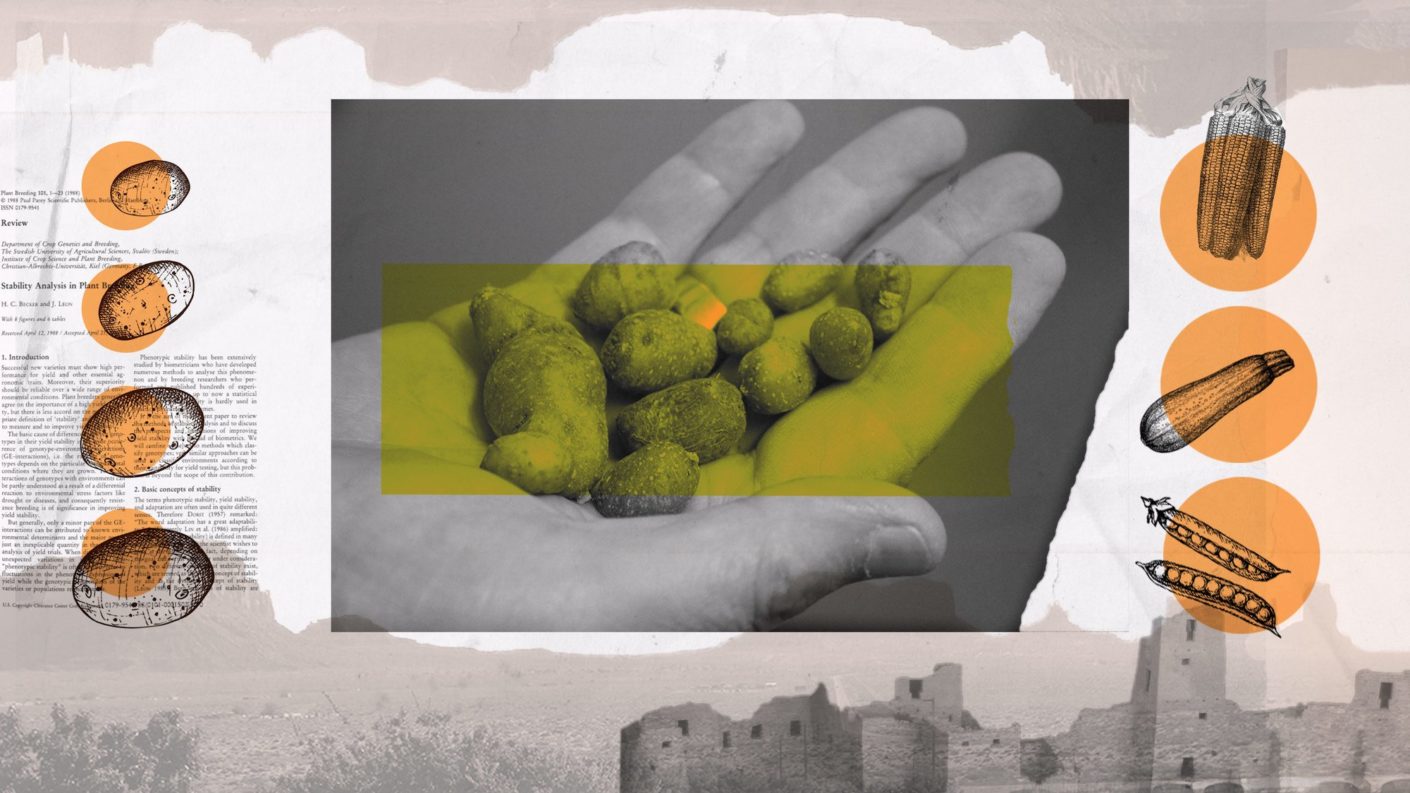Recommended soundtrack, Metamora - Little Potato:
From The Counter:

Solanum jamesii, aka the Four Corners potato, has sustained Indigenous people in the American Southwest for 11,000 years; USDA is now studying its 8-year shelf life, and its resistance to disease, heat, and drought. The future of this remarkable little potato remains unwritten.
“Hello everybody,” Bruce Pavlik said to no one. It took me a second to realize that Pavlik, an ecologist at the University of Utah’s Red Butte Garden, was addressing the plants. We were standing above a wide desert canyon just outside Bears Ears National Monument in southeastern Utah; near us was a stand of juniper trees. Further out, the canyon bottom was dotted with fragrant sagebrush and twisted piñon. And somewhere down there, likely near two humps of red sandstone where people once lived for a thousand years, were the potatoes.
Lisbeth Louderback, Pavlick’s collaborator and spouse, appeared beside him wearing a backpack GPS rig. An archaeologist at the University of Utah and the Natural History Museum of Utah, Louderback would use the rig to mark the locations of any potato plants we found, precise to the millimeter. Leaves collected from each plant would then be sent to a lab for DNA sequencing, the latest data in a sprawling research project on a wild potato species called the Four Corners potato. In 2017, Louderback and Pavlik found evidence that Indigenous peoples in the Southwest have used the potato for at least 11,000 years—far longer than any other documented potato use in North America.
That finding spurred the pair to delve further into how Ancestral Pueblo, Ute, and Diné people used the potato along with maize, squash, and beans—the so-called “Three Sisters” core to Indigenous agriculture in the Southwest. Archaeologists believe the Three Sisters were first domesticated in Central America, then brought to the dryland farms of the Colorado Plateau through the extensive trading networks that existed at the time. Louderback and Pavlik suspected the potato had also been carried around, cultivated, and perhaps even domesticated, all within the Four Corners area. If true, the potato would represent one of only a handful of independent crop domestication events anywhere, and the only known example in North America west of the Mississippi. “It puts us on the map,” Louderback told me.
“Reconnecting to the potato brings back our stories, our songs, our connection to the landscape. It brings back the cultural memory of how we used to nourish ourselves.”
But plumbing the potato’s secrets has required more than just archaeology. What started with Louderback and Pavlik has grown into a collaboration between some unlikely partners, with different, arguably incompatible views of how the potato should be used and valued. These include Department of Agriculture (USDA) geneticist John Bamberg, who is leading the work to interpret the potato’s DNA for fingerprints of domestication. Separate from the archaeology, Bamberg is working to use the Four Corners potato’s unique genes to breed a common potato more resistant to disease, heat, and drought—an increasingly urgent project in the face of our changing climate. Bamberg’s team is also exploring some of the potato’s other singular traits, like its ability to remain viable for eight years in the fridge, or its resistance to extremely cold temperatures.....
....MUCH MORE